Contents
Strawberries are a special berry for every gardener. This is a delicacy, useful vitamins, and professional growth. After all, caring for new varieties requires additional knowledge. strawberry varieties, like many crops, are divided according to the ripening time of the crop.
Berry happens:
- early;
- middle and middle-late;
- late;
- remontant.
What useful components in strawberries attract gardeners?
Vitamin C. The benefits of ascorbic acid are known to everyone. Therefore, the mere knowledge that strawberries contain more of this vitamin than lemons makes berries very popular. In addition to it, the following necessary elements are involved in the process of strengthening immunity and maintaining health:
- iron, copper and cobalt – to improve blood formation;
- magnesium helps protect against stroke;
- potassium is indispensable for the heart muscle;
- vitamin E serves as a prophylactic against the aging process of the body and oncological problems;
- calcium and fluorine – for the skeletal system and teeth, a worthy alternative to toothpaste;
- folic and salicylic acids for blood vessels and the fight against pathogenic bacteria;
- fiber is a godsend for digestion.
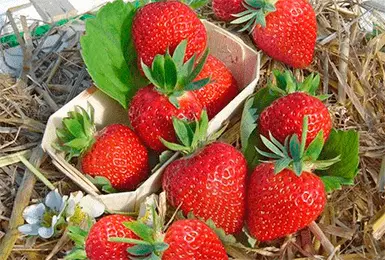
Late varieties of strawberries are rich in the listed components, so their advantage over early varieties is very large. During the harvest of late berries, strawberries will help to make a vitamin cocktail with raspberries, currants and other crops. Early species have already departed, but the late berry is just the way. Some late strawberry varieties are guaranteed to bear fruit until mid-September. Therefore, picking fresh berries at the end of summer is an important criterion for planting late varieties of strawberries.
Late varieties of garden strawberries are planted both in spring and autumn. It depends on the capabilities of the summer resident and the degree of loading. Spring planting is recommended during the period when the snow has already melted and the earth has had time to warm up. For late varieties of strawberries, it is important to saturate the soil with moisture during planting. In this case, they take root well and give an excellent harvest. Autumn planting of late varieties is carried out at the end of August or in September. It is not worth delaying the deadlines, otherwise the bushes will not have time to take root and will die from frost.
What else should a gardener know about late strawberry varieties?
- For late harvest, remontant strawberry varieties are excellent, which are capable of producing more than one harvest per season.
- You can grow bushes in open ground or in a greenhouse. It depends on the region and your preference or technical equipment.
- The best varieties of late garden strawberries for your dacha are zoned. You should not choose little-known and fastidious new items. It is better to grow species proven by gardeners than to be disappointed in late strawberries. Read the description and photo of the variety before planting.
- It is necessary to provide competent care for planting late garden strawberries so that the berries are of high quality and the yield is high.
Consider the main nuances of growing late varieties so that strawberries feel comfortable in the garden.
Tips for caring for late varieties
Let us dwell on the most basic parameters that will ensure good fruiting and protection against diseases of late strawberry varieties.
Site selection
Late strawberries do not impose special requirements on the soil; they will grow on any soil. But the health of the bushes and productivity depend on its composition. Those beds that are located on light fertile soil will differ in good performance. Sandy loam and sandy soil are the best fit, but on peat and sod-podzolic soil, if possible, try not to plant late garden strawberries. With a close location of groundwater, good drainage will have to be ensured. You can get out of the situation with the help of high ridges.
Preplant preparation
Dig up the selected area in the fall to the depth of the shovel bayonet. In the spring it is enough to loosen the place.
Strawberries should be well ventilated.
Next, you will need to check the site for the presence of pests. If you find colonies of parasites, treat the land with special preparations. Remove weeds before planting late garden strawberry bushes.
Landing
Be sure to maintain the density and planting pattern for the variety. There are beardless varieties of late strawberries. For them, the density will be different. They do not thicken the ridges with layering, but the bushes become more magnificent as they grow. Thickened plantings lead to poor ventilation of strawberries and, as a result, the development of diseases. Before planting, the roots are shortened and deepened into the planting hole so that the level of the soil and the root collar is on the same line. Compact the ground around the bush of late strawberries, water and mulch.
Care
Plantings are shaded in the early days to allow late strawberries to take root well. For 14 days, you will have to water daily, keeping the soil moist, then you can reduce it to one watering every two days. When the strawberries get stronger, water as needed, preventing the beds from drying out. Helps retain moisture by mulching or growing under cover.
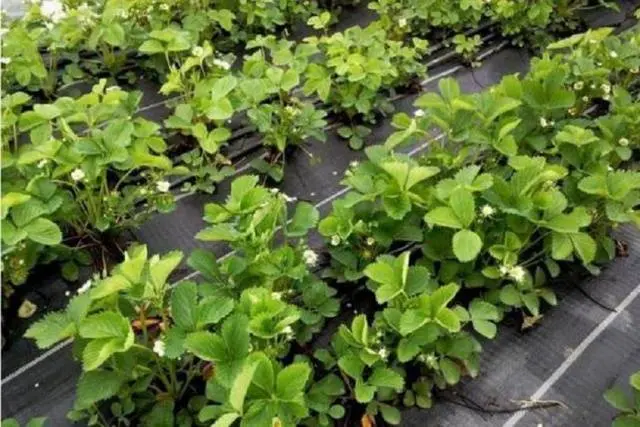
Feeding
For varieties of late strawberries, nutrition is necessary, and the latest ones need additional feeding. Here you need to follow some rules:
- make compositions no closer than 5 cm from the bush;
- basic nutrition – 4 top dressing per season;
- infusions of organic fertilizers must be diluted with water.
The main timing of the introduction of nutrient compositions
- Two weeks after planting late strawberry bushes for permanent residence. This time, it will be optimal to feed the berry with wood ash (0,5 cups) and superphosphate (30 grams). The components are diluted in 10 liters of water.
- At the time of flowering, a weekly infusion of organic matter is used. Mullein is taken in a ratio of 1:6, and chicken manure 1:20. It is also good to add 0,5 cups of wood ash to the composition.
- The next two top dressings are done after 14 days each. An organic infusion with ash or superphosphate is appropriate.
- For the latest varieties of strawberries, additional feeding is carried out with the same composition, but not earlier than after 2 weeks.
Proven late varieties of garden strawberries
What varieties of late strawberries are advised to grow by breeders and experienced gardeners? For each region there is a list of “their” favorite names. Consider the main ones with a brief description and photo.
“Malvina”
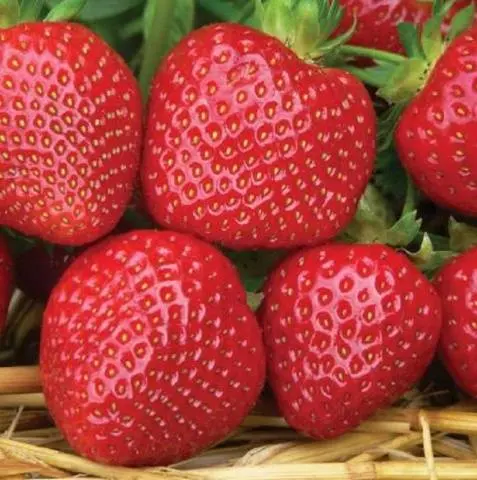
A late variety of garden strawberries with a dessert flavor. Bred by German breeders quite recently – in 2010. Refers to varieties of late garden strawberries with single fruiting and short daylight hours. Begins to produce ripe berries from the last decade of June to August. Characteristics:
- pollinators are not required;
- bush multi-horn, up to 50 cm in height;
- berries are large, dense, but juicy;
- fruit color is dark red.
Reminds many of the taste and aroma of strawberries from childhood. These figures are high.
The photo shows the berries of a ripe late strawberry “Malvina”. They have such a light color when ripe. You don’t have to buy seedlings – the variety gives a lot of whiskers, with which it is easy to propagate Malvina strawberries. It requires attention during periods of outbreaks of diseases of gray rot and brown spot; among pests, thrips and weevils can cause great damage.
“Great Britain”

Yielding variety of late garden strawberries with beautiful round-conical berries. Up to 2 kg of dark cherry fruits are harvested from one bush. The plant is powerful, the root system is strong, developed. The taste is sweet and sour, the pulp is dense, the weight of one berry reaches 120 grams. The advantages of the variety include resistance to frost and disease, which is very much appreciated by lovers of late strawberries. Another advantage of “Great Britain” is the strength of the berries, which perfectly tolerate transportation, and retain their presentation for a long time.
“Bohemia”
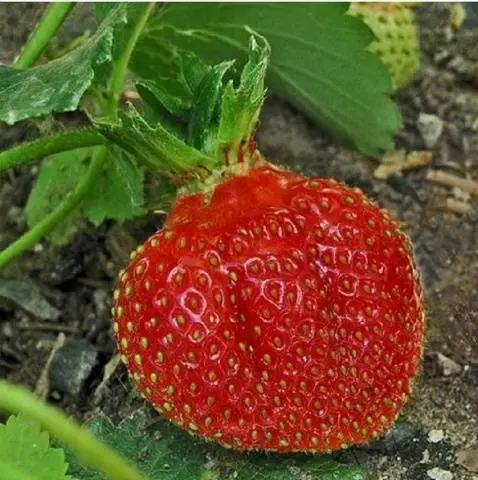
A relatively new variety of late berries. Popularity has won the high and stable productivity. Bushes and berries are equally powerful and large. Strawberries are heavy, with a rich aroma and pleasant taste. An excellent variety of late strawberries – grows equally well in regions with different climatic features. In the north and in the south it gives a high yield. The advantage of “Bohemia” is resistance to fungal infections.
“Elsinore”
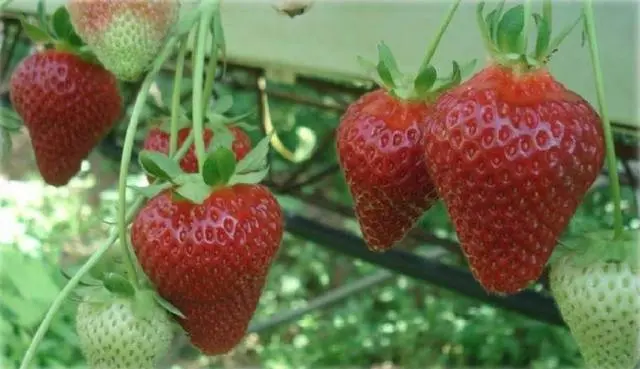
A gift to gardeners from Italian breeders. Late garden strawberry with slightly leafy bushes of medium height. Mustache gives a little, but is distinguished by very high peduncles. This characteristic saves gardeners in the rainy season from the death of the crop. The berries are quite large, up to 70 grams of weight each. The shape of the fruit is conical elongated. Very sweet and juicy late strawberry. Drought tolerant, guaranteed high yield. The photo shows the collected fruits of the Elsinore strawberry.
“Lord”
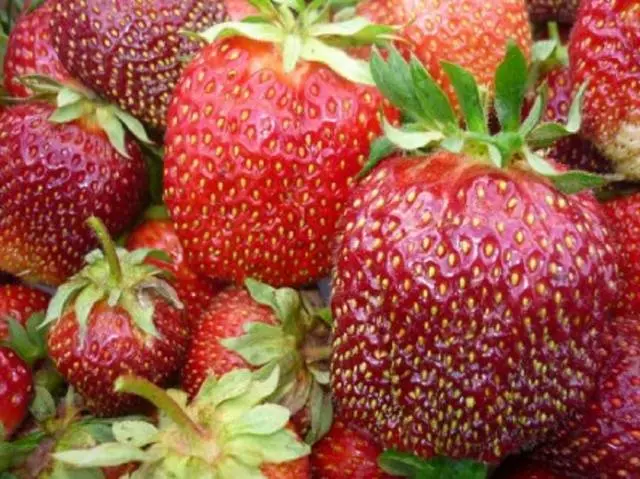
The work of English breeders to develop high-yielding late strawberries led to the appearance of the Lord variety. Excellent for commercial cultivation, as it fully meets the yield criteria for this purpose. On one bush grows up to 3 kg of large, juicy and fragrant berries. The advantage of “Lord” is also that fruiting does not decrease for 10 years. Gardeners classify it as a mid-late variety. The bushes are tall, the berries do not touch the ground, which protects them from rot. It winters well, retains large-fruitedness for many years.
“Chamora Turusi”

Some prefer the name “Chamora Kurushi”. Both will help you find the right variety. This type of late-ripening strawberry is spreading at a fast pace. Large-fruited and high yield allowed him to take one of the first places in the list of popular late varieties. If you do not violate the requirements of agricultural technology, then fruiting continues for a very long time. With insufficient watering, the berry will be sluggish and will not reach the maximum size. In good condition, the bush is harvested from it with fruits weighing 100 grams or more. Then the berries become smaller, but there are no very small ones in the variety. A distinctive characteristic is the color of the berries. When ripe, they become brick-colored.
It is necessary to carefully observe the schedule of fertilizing, watering, and regularly carry out preventive measures against diseases and pests. The exactingness is justified by the quality of the berries. Gardeners who carefully observe all the parameters when growing it, get berries with an amazing taste and a real “strawberry” aroma.
“Pegasus”
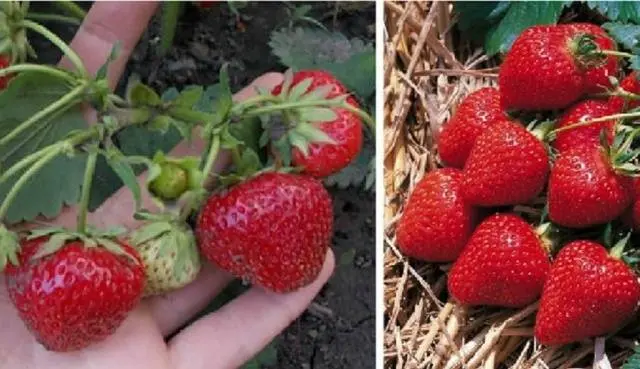
It is also famous for its productivity and beauty of fruits. Late strawberry “Pegasus” retains its shape very well during transportation, its presentation does not change at all during transportation. It is highly valued by gardeners for its resistance to common strawberry diseases:
- verticillium wilt;
- Phytophthora.
It also resists strawberry mite invasions well, but suffers from powdery mildew. The late Pegasus variety is not too picky about the exact observance of agrotechnical requirements, which is why many gardeners grow it.
“Zenith”

A good mid-late variety, the first harvest is in July. Features – medium bush and short peduncles. This nuance is covered by high yields. The bushes are medium, but the leaves are large, bright green. The fruits are sweet, without an admixture of sourness. It tolerates frost well and is not susceptible to diseases (except for root rot).
“Princess Diana”

This late garden strawberry variety is familiar to many gardeners. By the name, you can guess the country in which it was bred. The bushes are sprawling, but with a small foliage. The berries ripen wedge-shaped, with a red tint and a wonderful taste. The yield of the variety is high. Fruiting begins in mid-July, but requires additional shelter in cold winters.
List of late remontant varieties
These representatives are able to produce several crops per season, which brings them to the fore. They are cold and disease resistant.
“Albion”
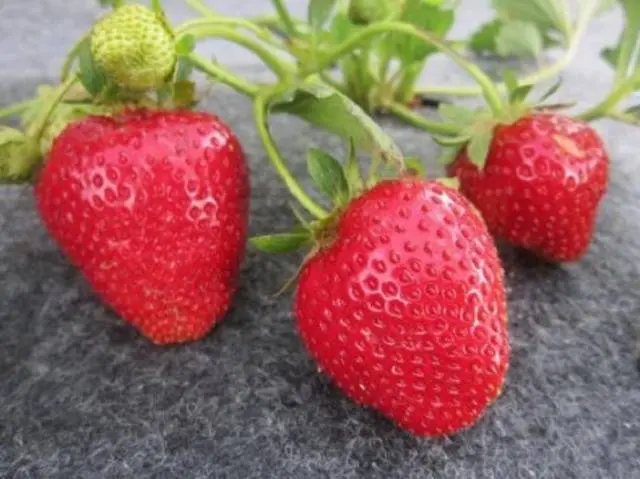
A very popular variety of remontant garden strawberries. The berries are large and dense, which makes it possible to transport them with the least loss. The color of the fruit is a very beautiful cherry shade. What distinguishes the Albion variety from other species. First of all it is:
- resistance during the period of climatic and temperature changes;
- resistance to common strawberry diseases;
- not subject to pest invasions.
Fruiting lasts from early June to mid-October. The agrotechnics of remontant varieties allows even inexperienced gardeners to grow them, so Albion is ubiquitous.
Selva
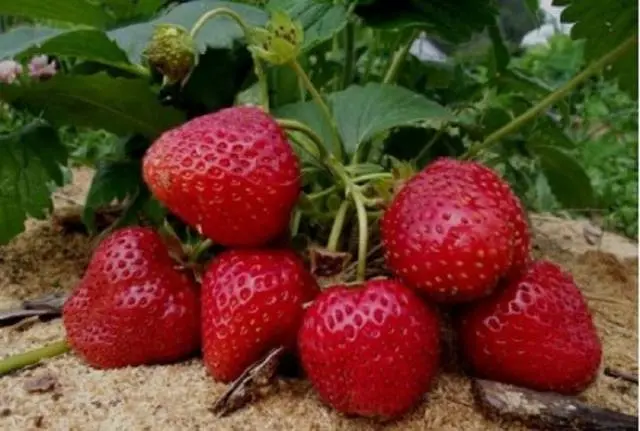
Excellent resistance to diseases, semi-spreading bushes, dark green leaves. Cold ambient temperatures have absolutely no effect on the yield of the Selva variety. An interesting feature is that the density of the berry resembles an apple. It gives the first harvest very early, the next ones have a richer taste and aroma.
“Elizabeth II”
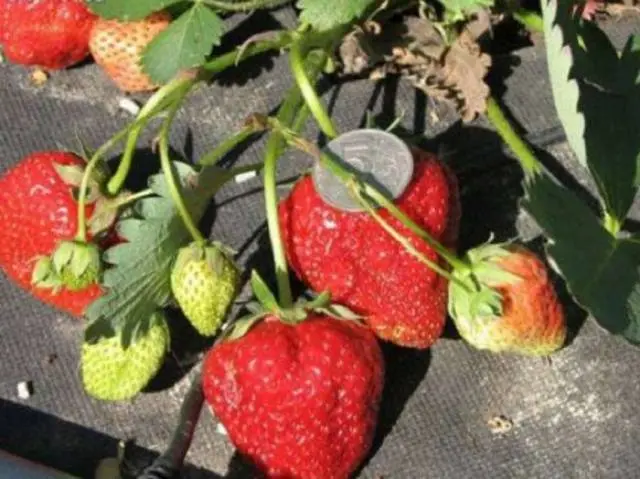
It has gained wide distribution due to such qualities as:
- large-fruited;
- very pleasant taste;
- undemanding to care;
- resistance to transportation;
- threefold fruiting.
The peculiarity of “Elizabeth II” is that the ovaries of a new crop are formed in the fall, so provide strawberries with shelter in the winter to ripen an early crop. The last harvest has a less intense color and taste.
Results
There are other worthy varieties of late strawberries. They can be found on garden forums, in special literature. You must always carefully read the description of the species, have a photo of the fruit. Strawberries find their use in different forms, but fresh – they are the most useful. Therefore, the cultivation of late varieties of garden strawberries is a very right decision.









